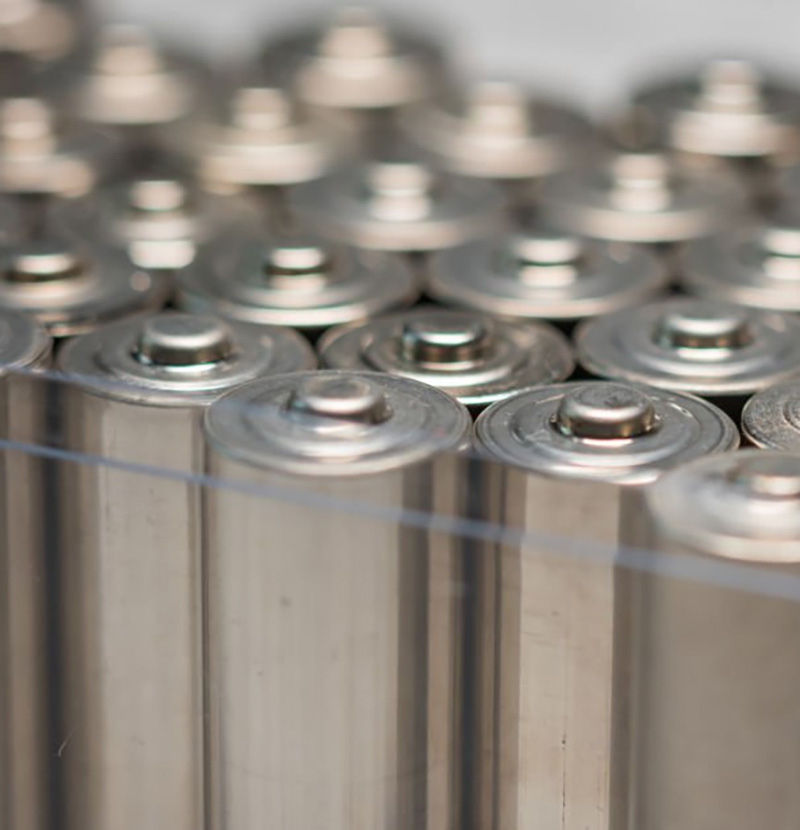Once manufactured, battery cells are placed into battery modules or packs and can’t be removed for inspection. So this application focuses on final inspection of battery cylindrical cells before integration into a module or pack.

What manufacturing defects occur?
Throughout the cell assembly and finishing processes, cylindrical cells sustain defects such as:
These defects can impact the quality, safety, and performance of cylindrical battery cells and cause costly recalls and legal liability, making it crucial for manufacturers to implement rigorous quality control measures and inspection processes to detect and rectify these issues during production.
Additionally, manufacturers need to distinguish between acceptable cosmetic blemishes and functional flaws in order to avoid overkilling battery cells and ultimately reduce scrap rate.
However, cylindrical cell defects are difficult to detect. The reflective surfaces of cylindrical battery cell casings can cause reflections that make defects hard to see. Traditional machine vision systems can fail to distinguish between reflective surfaces and actual defects, causing both false positives and escapes.
And in high-volume manufacturing environments, cells must be inspected quickly to keep up with production rates. Traditional machine vision products may fail to keep up with required cycle times.
The Solution
UnitX’s AI-powered inspection effectively detects cylindrical cell defects where other solutions fail.
First, the OptiX imaging system illuminates and images assembled cylindrical cells. Then, the CorteX AI platform is trained on cylindrical cell defects. Lastly, those AI models are deployed to the CorteX Edge inference system to detect and classify defects in-line.
Why UnitX for final cylindrical cell inspection?
OptiX provides superior images that minimize reflectivity while maximizing defect visibility. It has 32 independently controllable lighting sources that can be optimized for cylindrical cell surfaces and defects via software. Its computational imaging capability can be used to take multiple shots and eliminate hotspots caused by reflective casing surfaces. And its lighting dome design supports a very acute incidence angle of projected light, causing even very tiny defects to cast shadows which increase their visibility.
CorteX accurately detects random, complex defects. It automatically normalizes for variability in positions and orientations and recognizes defects down to the pixel-level.
UnitX supports fast experimentation and adapts to changes in production environments. OptiX lighting is easily configured via software and CorteX AI models are sample efficient– they only require a few images to train on new defect types.
UnitX provides rapid, 100% inline inspection. OptiX has bright LEDs and fast fly capture speeds of 1m/s for high speed imaging. And CorteX supports high inference speeds (up to 100 MP) to quickly output an OK/NG decision, seamlessly communicating that decision via integration to all major PLC, MES, and FTP systems.
With UnitX, manufacturers automate cylindrical cell final inspection to:
- Prevent quality escapes that cause degraded battery performance and failure, safety risks, and costly recalls
- Minimize false rejection rates common with traditional machine vision, reducing scrap and wasted materials
- Replace manual inspectors, saving manufacturers money and improving efficiency
UnitX Inspection Example Deep Dive
In this inspection, we investigated cylindrical cells for rust caused by electrolyte leakage. The manufacturer was previously using a legacy vision system which had a high over rejection rate since rust marks were similar in color and shape as laser weld marks ont the lid. This manufacturer had to resort to expensive manual inspection which was slow and inaccurate.
Imaging
First, we used OptiX to capture images of the cylindrical cells, making sure we captured both defective and OK parts.
Training
Next, we used CorteX to train our models. We created a label for the rust defect.
We then labeled that defect in the images we captured from OptiX, using just a few images.
Detection
Next, we deployed the AI models to CorteX on new cells to inspect 100% of battery cells and detect and classify rust.
Using UnitX, this manufacturer was able to:
- Meet required cycle times– UnitX inspected a 64 battery cells on a single pass within 13 seconds
- Reduce error rate– UnitX reduced false acceptances to an average of .04% and false rejections to an average of .2% (out of an average of 2,200 inspected cells per day). This was 50x better than the error rate of manual inspectors.
- Automate inspection– Manufacturer was able to fully automate inspection and remove the need for 3 manual inspectors across 11 lines in total